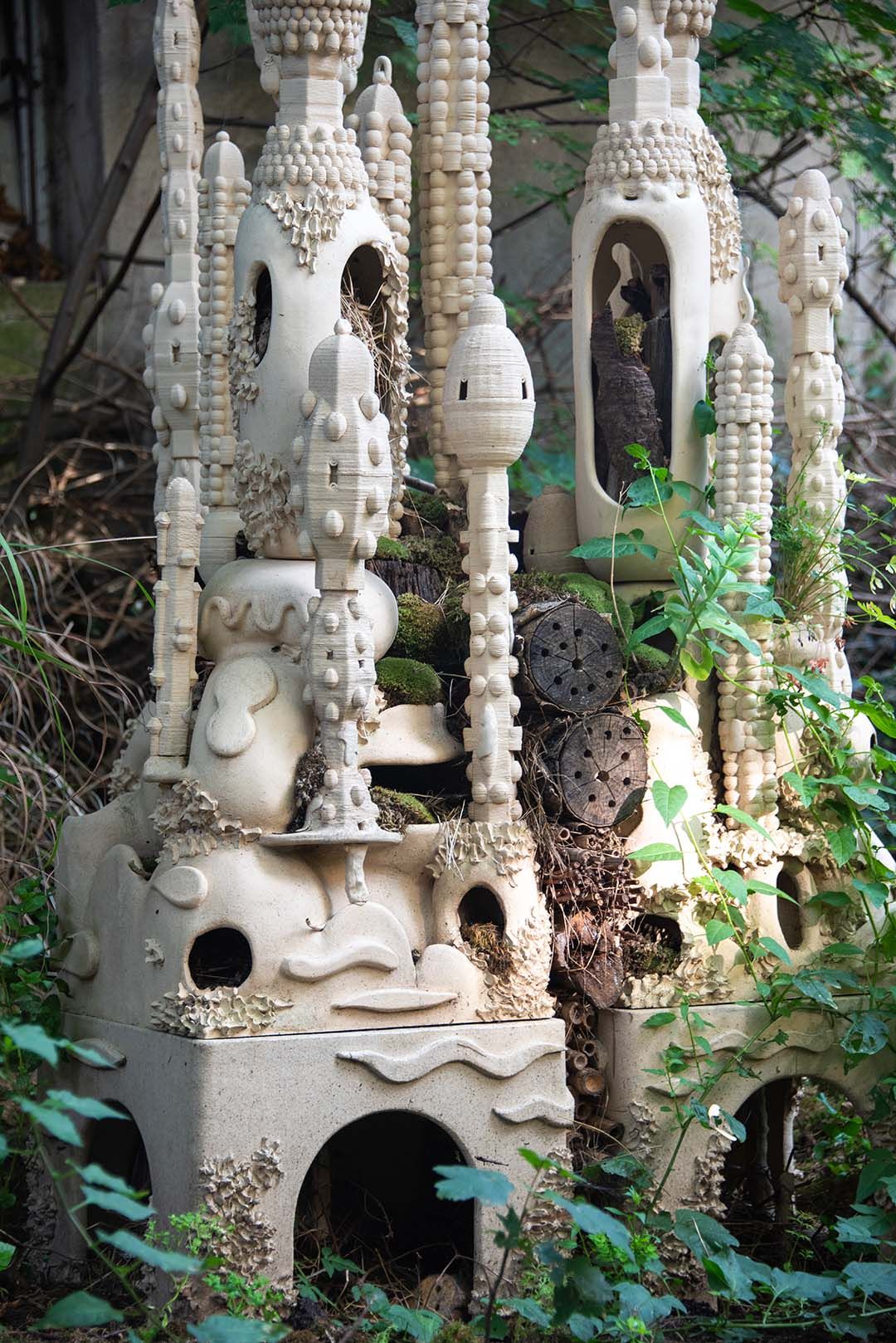Inspired by living constructions, artist Raphaël Emine uses WASP’s 3D printers to build insect hotels for small wildlife
Through a captivating blend of utopian architecture, the plant world, and decorative arts, artist Raphaël Emine has created a series of ceramic sculptures designed to house insects and other living organisms. These works explore the coexistence and interaction between nature and creation, highlighting the importance of preserving the micro-world around us.
The ceramic sculptures were created using WASP 40100 LDM and Delta WASP 2040 Clay with a Continuous Feeding System, enabling the construction of intricate designs ranging from small to large scale.
3D Printed Houses for Insects – Utopies entomologiques
Les Utopies Entomologiques (Entomological Utopias) are complex ceramic structures designed as a housing system for small wildlife. Drawing inspiration from nature’s living construction models — such as honeycomb cells, worm and spider webs, plant fractals, and geodesic mineral formations — the design of these unique ‘insect hotels’ reflects the natural world in a dynamic way.
Unlike the usual public sculpture, which presents itself as a solid, rectilinear, enclosed monolith, these ceramics are carved with galleries, tunnels, corridors, and balconies. Their baroque, biomorphic designs evoke a cross-fertilization of different influences, reminiscent of fantastical or utopian architecture.
The structures are meant to live in outdoor spaces, working through several cycles of life and metamorphosing to the rhythm of the seasons. Currently, two sets of sculptures have been installed: Utopies entomologiques I and Utopies entomologiques II, respectively in 2023 and 2024.
Merging traditional clay modeling techniques with contemporary technologies like 3D printing, these sculptures not only serve an active role in supporting the environment they inhabit but also captivate human viewers with their intricate designs, showcasing the versatility of ceramic 3D printing technology and its potential for innovative applications.
3D Printed Nests to Attract Life
The Nests were created as part of an installation in the palm grove of Parc Maison Blanche in Marseille. Ravaged by weevils, several of these dead palm trees served as supports for sculptures designed to attract life. Inspired by the artist’s entomological research, these works experiment with how colors and shapes can attract specific insect species, while incorporating plants and organic elements to further invite life into these ceramic cocoons.
www.3dwasp.com

 Deutsch (Germany)
Deutsch (Germany)  Polski (PL)
Polski (PL) 









